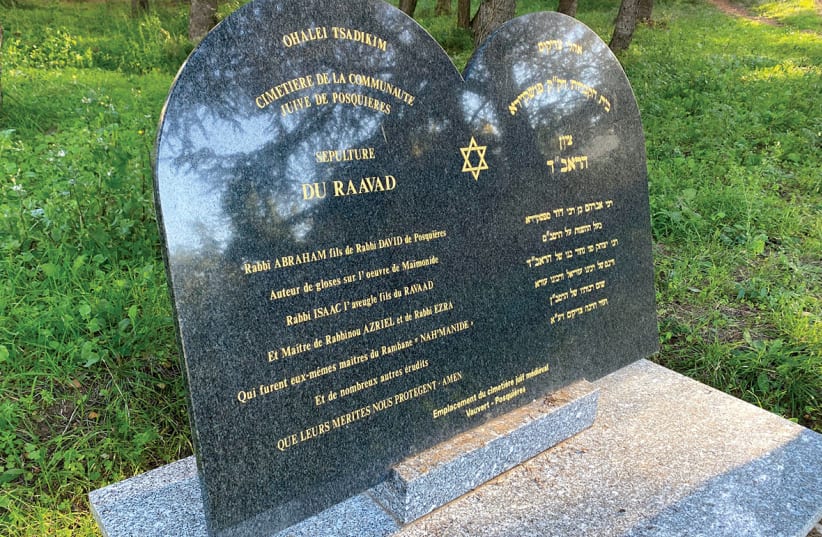As can be expected from Haym Soloveitchik’s previous work, the meticulous analysis and scholarly depth found in his anthology titled Collected Essays: Volume III offer invaluable perspectives on medieval Jewish civilization, historical inquiry, and halachic discourse.
As the reviewer delved into its pages, he found himself immersed in a thoughtful exploration of these complex topics, guided by Soloveitchik’s expertise and clarity of thought. This collection is not only informative but also thought-provoking, marking it as an impressive resource for anyone interested in Jewish intellectual history.
Originally published in hardback, it was recently released by The Littman Library of Jewish Civilization in paperback.
A thought-proving and informative text on Jewish intellectual history
The first part of this book is dedicated to analyzing the pietist phenomenon known as Chassidei Ashkenaz (associated with Rabbi Shmuel HaChassid, Rabbi Yehuda HaChassid, and Rabbi Elazar Rokeach, who were active in Germany in the 12th and 13th centuries). In that part of the book, Soloveitchik delves into the intricate world of Chassidei Ashkenaz, looking at the pietist ideologies and practices of this elitist movement with a critical eye. In doing so, Soloveitchik masterfully dissects the core tenets of their worldview, highlighting the concept of retzon habore (“the will of the creator”), which fuels its adherent’s profound yearning to fulfill the creator’s “complete” will. This is accomplished by following rigorous adherence to strictures above and beyond those codified by mainline Halacha. Within the realm of Halacha, this ideology gives way to an inclination toward stringencies, coupled with an (over)emphasis on the purity of thought (exemplified by their stringent prohibition against gazing at women).
Moreover, Soloveitchik intricately explores the possible evolution of Chassidei Ashkenaz thought, considering whether or not there may be nuances among its various developmental stages or differences among the ideas espoused by its above-mentioned intellectual heroes.
Soloveitchik astutely examines how the movement’s ideas continued to reverberate throughout the broader Ashkenazi world even after the collapse of the movement proper. This is particularly seen in the case of self-mortification and other forms of penance as rites of repentance. Additionally, Soloveitchik delves into the intriguing interplay between Chassidei Ashkenaz and the Tosafist movement, unraveling the complexities of the dynamic relationship between them.
In the context of his work on Chassidei Ashkenaz, one of Soloveitchik’s more well-known contributions to scholarship lies in his groundbreaking insight regarding the seminal work commonly known as Sefer Chassidim. Soloveitchik’s astute observation notes that the first 153 paragraphs of that book are actually sourced in pietistic writings/teachings from outside the particular pietist community of the Chassidei Ashkenaz. Soloveitchik shows how the content of those paragraphs actually diverges from the core ideals of the Chassidei Ashkenaz movement (while sometimes retaining their verbiage), at times even citing passages verbatim from Maimonides. Soloveitchik’s spirited exchanges with scholars who questioned his assumptions about Chassidei Ashkenaz offer a fascinating glimpse into the scholarly dialogue surrounding this controversial movement, as much of the material printed in this first section of the book details the opinions of those who disputed Soloveitchik’s assumptions about Chassidei Ashkenaz and how Soloveitchik replied to their arguments.
In the second part of this book, Soloveitchik embarks on a scholarly exploration of the Jewish community in Provence (in modern-day Southern France), particularly focusing on its revered rabbinic figure, the Raavad – Rabbi Avraham of Posquières. In this section, Soloveitchik shows how even though contemporary Talmudic scholars see the Raavad as primarily a critic of Maimonides’ and Alfasi’s halachic magna opera, in earlier times the Raavad’s legacy was shaped by his commentaries to the Talmud. Thus Soloveitchik brings to the fore the multifaceted legacy of the Raavad, shifting the spotlight from his role as a critic of Maimonides (which only occurred as a sideshow to the Raavad’s main work, as he only encountered Maimonides’ writings at the end of his fruitful life) to his role as an independent and creative Talmudic commentator and halachic decisor. Much of the Raavad’s work and originality was overshadowed by the later work of Nachmanides and his students, but Soloveitchik urges the reader to see the Raavad’s groundbreaking output for what it truly is. In doing so, Soloveitchik also shows how the Raavad’s commentary differs from the monumental contributions of Rashi.
This section of the book also contains a series of essays penned in response to criticism about how Soloveitchik framed Raavad’s relationship with Gaonic rulings and how the Latin legal terminology used in Provence may have influenced the Provencal sages’ way of looking at sureties in halachic discourse.
In the context of discussing Provencal Jewry, the figure of the Meiri emerges as a compelling subject of inquiry. In a chapter dedicated to that figure, Soloveitchik offers a critical description of Meiri’s Talmudic methodology and his contribution to Talmudic study. Through Soloveitchik’s sharp lens, we gain a deeper appreciation of how Meiri’s voluminous Talmudic commentary has been received throughout the ages and what led to its gaining more prominence in the last century than it has ever had.
In discussing Talmudic commentaries, a recurring theme emerges from this book: Soloveitchik’s profound reverence and awe for Rashi as a commentator who transformed the Talmud into an open book in a way that was unparalleled in the medieval world. While acknowledging the contributions of other commentators, such as the School of Mainz (printed in the ubiquitous Vilna Shas under the name Rabbeinu Gershom) and the Raavad, Soloveitchik sees Rashi’s contribution in shaping the way Talmud is studied as entirely unmatched.
Another theme that runs like Ariadne’s thread throughout this collection of Soloveitchik’s writings is the question of how and when historical data can be culled from halachic literature. Unlike some scholars who view Halacha as predominantly shaped by the ideological leanings or even personal interests of its decisors, Soloveitchik presents a compelling argument that Halacha – like any legal system – operates according to its own rules and considerations. Soloveitchik therefore cautions against the tendency to “historicize” rulings by attributing them solely to extra-halachic motives, emphasizing the necessity of identifying a “smoking gun” in the form of unsound halachic reasoning that points to the notion that the decisor is motivated by something other than purely halachic thought before making such accusations. This evidentiary criterion, which Soloveitchik terms the “angle of deflection,” serves as a guiding principle in much of his historical analyses, even when it is not explicitly articulated.
Many of the essays in this collection have already been published and critiqued by other scholars decades ago. Within these pages, Soloveitchik gracefully responds to some of those critiques, skillfully defending and clarifying his positions. Often, he accomplishes this task with elegant simplicity by simply reproducing his original words verbatim while offering a slight addition or modifications where necessary. He is also not afraid to concede to his interlocutors when he sees that their arguments as compelling. This dialogue with scholarly discourse not only enriches the reader’s understanding but also underscores Soloveitchik’s commitment to rigorous intellectual engagement and his own legacy in the study of Jewish history.
The scholarship of Soloveitchik, who is one of the preeminent Jewish historians of the medieval period, is marked by a rare blend of academic rigor and profound reverence for tradition. Hailing from one of the most illustrious rabbinic dynasties and identifying himself with the Lithuanian Yeshiva tradition, Soloveitchik navigates between these worlds, crafting erudite works in eloquent English as befits his towering stature as a scholar. This reviewer in particular has eagerly consumed Soloveitchik’s previous volumes and essays, and for him the anticipation of future scholarship from the pen of this esteemed octogenarian scholar is met with great excitement. Soloveitchik’s contributions continue to illuminate the corridors of Jewish intellectual history, leaving an indelible mark on generations of scholars and readers alike.■
- Collected Essays: Volume III
- Haym Soloveitchik
- The Littman Library of Jewish Civilization, 2024
- 470 pages; $35.70 (paperback)

